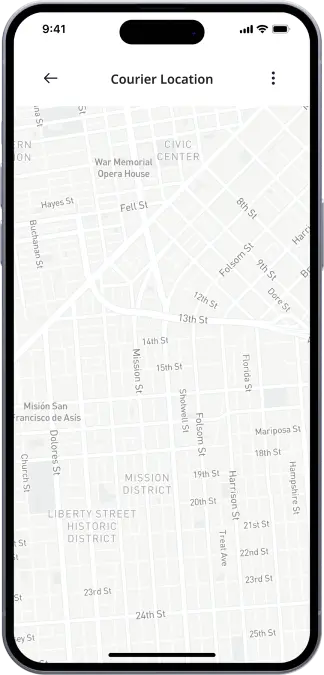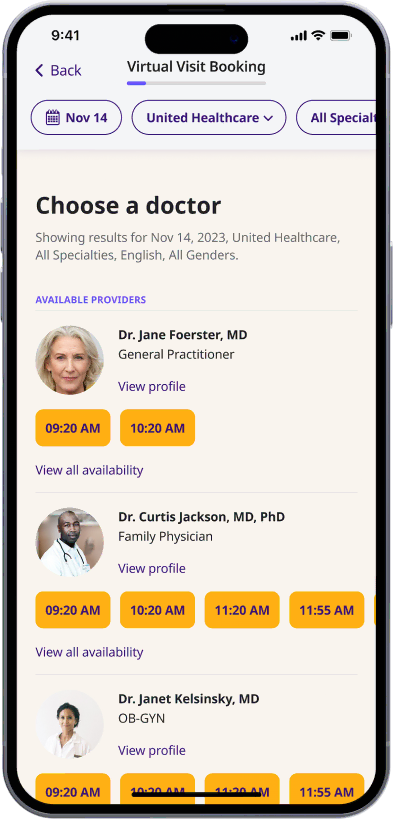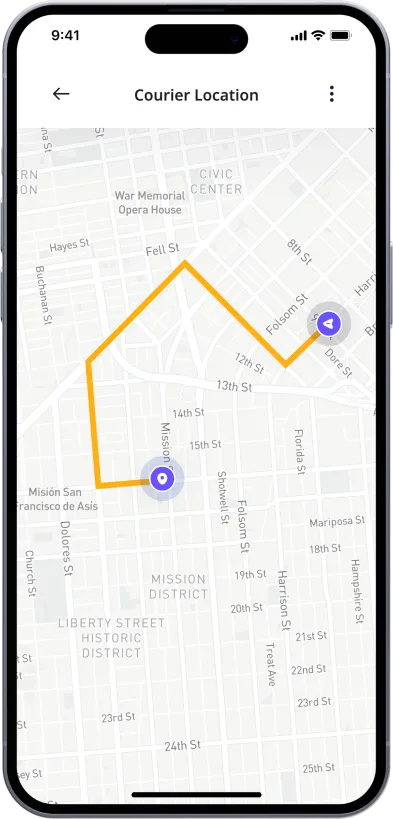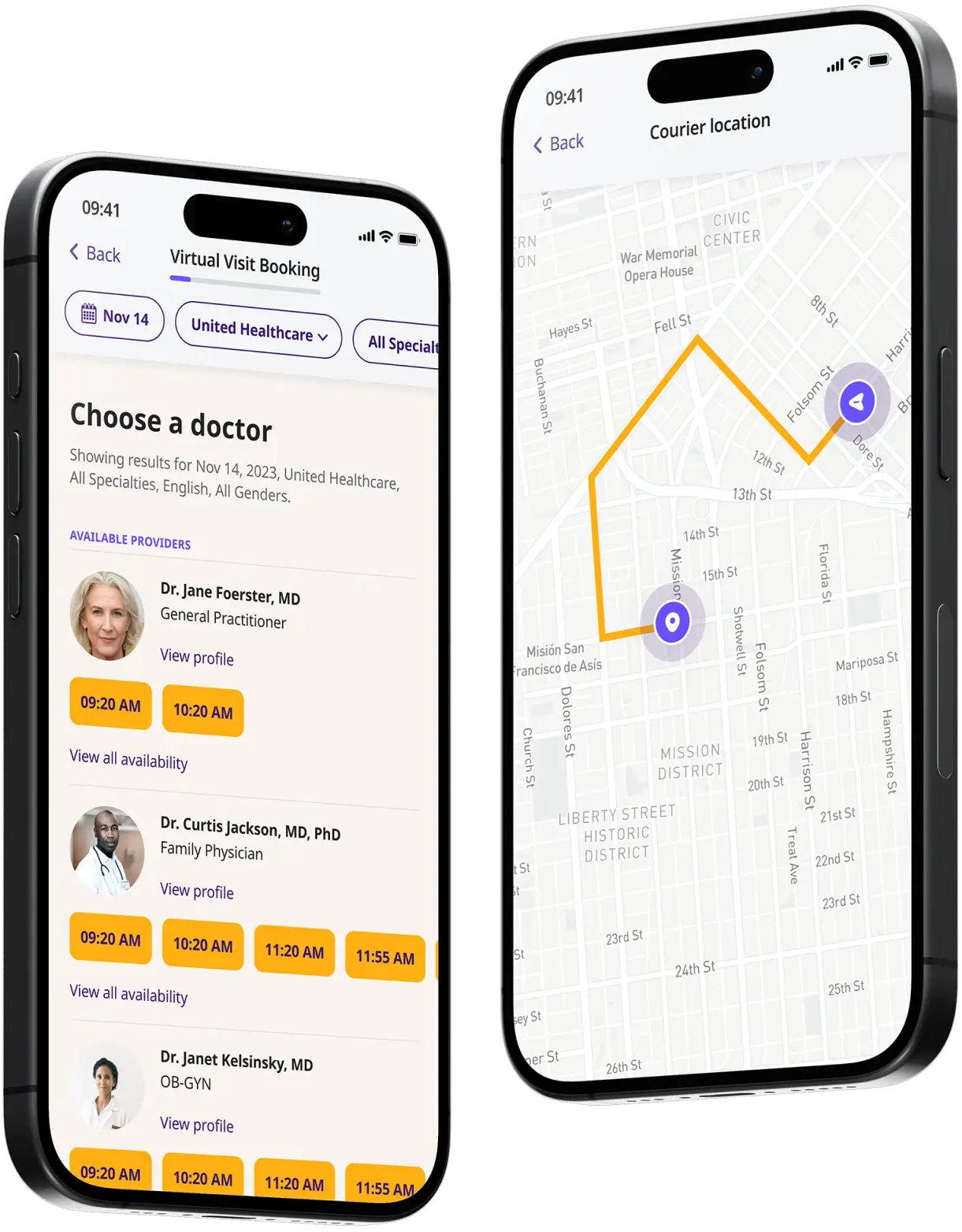Get a Methylprednisolone Prescription Online (Medrol)
Get a new prescription for methylprednisolone (Medrol) or refill your medication online.


Available in 50 states. Insurance accepted.
Fast
virtual visits
24/7 care
assistants
Prescriptions
as needed



See If Delivery Is Available Near You
Delivery Not Available
Enter your ZIP code to check if prescription delivery is available in your area and how soon your meds could arrive.
How to get started
Choose your doctor, start a virtual visit, and have your prescriptions sent to your preferred pharmacy for pickup — all in just a few easy steps.
Choose a doctor
Choose a physician by availability, specialty, ratings, and more.

Start a video call
Get connected with a doctor anytime, anywhere.

1-Hour Rx Delivery
Your prescription delivered to your door in 1 hour or less.

Available in 50 states. Insurance accepted.
One-Time
Physician Visit
One-time visit with a physician for diagnosis, treatment, Rx, labs, referrals, and doctor’s notes.
Accepted Insurances
See why people turn to DrHouse...
As seen in

Methylprednisolone (Generic Medrol)
What Is Methylprednisolone?
Methylprednisolone is classified as a corticosteroid drug. It is prescribed as an anti-inflammatory drug, treating inflammation caused by various factors or conditions throughout the body. Many patients are prescribed this drug if they suffer from arthritis or certain allergies.
This medication is often prescribed as an oral tablet and will usually be sold under the brand name Medrol.
How Does Methylprednisolone Work?
As mentioned previously, Methylprednisolone is a corticosteroid with anti-inflammatory properties. It is also considered an immunosuppressant due to how it works.
A corticosteroid like Methylprednisolone will replicate the glucocorticoid hormones secreted by your adrenal glands. Certain conditions can inhibit the body’s ability to naturally produce this particular hormone. As a result, the immune system has a negative response and believes it needs to fight to protect the body from danger. This immune response typically leads to increased inflammation.
Methylprednisolone gives the body synthetic glucocorticoid hormones, which help to prevent this negative immune response. Instead, inflammation is reduced and the immune system is calmed down. Therefore, it can be used to treat a wide range of inflammatory and immune system conditions.
What Is Methylprednisolone Used For?
Doctors are likely to prescribe Methylprednisolone for any of the following conditions:
- Arthritis
- Asthma
- Certain allergic reactions
- Blood disorders
- Crohn’s disease
- Ulcerative colitis
- Multiple sclerosis
All of these conditions either cause inflammation or occur as a result of an overactive immune system. It is also possible to see Methylprednisolone used to treat various skin conditions that are triggered by inflammation.
In rare instances, this drug has been used to treat some forms of cancer too. However, this is typically for palliative care as a pain reliever, rather than to help cure the cancer itself.
What Are the Side Effects of Methylprednisolone?
Methylprednisolone may cause a multitude of side effects due to its effect on the immune system and the human body as a whole.
The majority of these side effects are mild and will not be a cause for alarm. These include:
- Mild stomach pain
- Mild nausea
- Headaches
- Dizziness
- Difficulty sleeping
- Increased anxiety
- Changes to menstruation
- Acne/pimple growth
- A sense of restlessness
You might experience some of these symptoms when you first start taking Methylprednisolone. In most cases, they will fade away or become easier to manage as your body adjusts to the medication. If the side effects do not improve – or get severely worse – you should tell your doctor and temporarily stop taking the medication until further notice.
Some side effects of Methylprednisolone are more severe than those listed above, such as:
- An aggressive skin rash
- Swelling in the face or lower legs
- Issues with your sight/vision
- Excessive muscle weakness
- Black, tarry stools
- A cold/flu that lasts longer than usual
Notify your doctor if these severe side effects are present so they can tell you what to do next. It’s likely your body has had a bad reaction to Methylprednisolone and you may need a reduced dose or a different type of medication.
The listed side effects are not exhaustive and you may experience something not mentioned here. You should always read through the patient information leaflet before taking Methylprednisolone and talk to your doctor about any concerns you have.
How to Take Methylprednisolone?
Take Methylprednisolone as directed by your doctor when they prescribe the medication. The exact dosage amount will be written on your prescription form. You must stick to this dosage and avoid taking more or less than suggested.
Similarly, continue taking Methylprednisolone for as long as directed. Do not exceed the duration prescribed by your doctor as this can lead to adverse side effects. It is common for doctors to gradually decrease your prescription dose as your symptoms improve. This helps the body get used to not having Methylprednisolone in your system. Abruptly stopping this medication after taking it for a long time can also cause side effects.
Each patient may have a different dose depending on their particular medical condition and what Methylprednisolone is being used to treat. If you accidentally forget to take a dose, do not take it along with your next dose. Missing one dose is better than taking a double dose as it could lead to problems.
Read the information leaflet that comes with your medication as this also tells you what you can or cannot take Methylprednisolone with. Generally, it is okay to take this medication with meals. It is prescribed as an oral tablet that can be swallowed with water or milk.
Follow your doctor’s instructions for a couple of weeks and make a note of your symptoms. If they persist and don’t show signs of improvement, talk to your doctor again. They may choose to increase your dose for improved efficacy.
Frequently Asked Questions About Methylprednisolone
Who Should Not Take Methylprednisolone?
If you’ve experienced allergic reactions to its ingredients, have systemic fungal issues, are scheduled for or have recently had live vaccinations, or deal with active infections, it’s crucial to speak with a healthcare professional before starting methylprednisolone.
Moreover, it’s essential to seek advice from a physician if you have a history of:
- Peptic ulcers
- Specific viral conditions, such as untreated herpes or chickenpox
- Eye disorders like glaucoma or cataracts
- Elevated blood pressure levels
- Cardiac conditions or heart disease
- Blood sugar imbalances or diabetes
- Bone density concerns or osteoporosis
- Mental health fluctuations, including mood swings or severe depression
- Liver or renal challenges
- Recent interactions with infectious diseases like measles or tuberculosis
- Pregnancy or current breastfeeding
- Considering its use for pediatric patients
Medications can interact in unpredictable ways and can have different effects based on individual health and history. Always ensure you’re fully informed and under the guidance of a medical professional when starting or stopping any medication.
What Is the Most Common Side Effect of Methylprednisolone?
The side effects of Methylprednisolone can vary and the most common side effects tend to be dose-dependent, which means they are more likely to occur or be more severe with higher doses.
Common side effects include:
- Mild stomach pain
- Mild nausea
- Headaches
- Dizziness
- Difficulty sleeping
- Increased anxiety
- Changes to menstruation
- Acne/pimple growth
- A sense of restlessness
- Fluid retention
- Increased blood pressure
- Mood swings
- Weight gain
- Increased blood sugar levels
- Increased risk of infections
The list above is not exhaustive and more side effects may occur. It is important to talk to your doctor if you experience any unusual or severe symptoms while taking Methylprednisolone. Your doctor might adjust the dosage or switch medication if necessary.
What to Avoid While Taking Methylprednisolone?
While taking Methylprednisolone you should avoid the following:
- Alcohol – Alcohol can exacerbate the side effects of Methylprednisolone.
- High-Sodium Foods – Methylprednisolone can cause your body to retain sodium, which can lead to fluid retention and increased blood pressure. Limiting your salt intake might be recommended.
- Grapefruit and Grapefruit Juice – Grapefruit can increase the level of methylprednisolone in your bloodstream and may increase the side effects of it.
- Caffeine – Corticosteroids like Methylprednisolone may cause you to feel jittery or anxious and drinking caffeine might exacerbate this side effect.
- Vaccines – It may be advisable to avoid live vaccines, as your immune response can be impaired.
- Other Medications – Some medications might interact with Methylprednisolone and should be avoided or taken with caution. Tell your doctor about all other medications you are taking, including over-the-counter drugs, vitamins, and herbal supplements. Always inform your pharmacist if you are taking any medications before buying any new ones.
The list above is not exhaustive and there may be other activities, foods, or medications you should avoid while taking Methylprednisolone. Make sure to check with your doctor before taking any other medications or engaging in activities that may conflict with Methylprednisolone.
How Long Does It Take for Methylprednisolone to Work?
It is important to note that Methylprednisolone works differently for different people. Many factors like the patient’s age, weight, and medical condition can influence how quickly it starts working.
Generally, it takes a few days to a week or two before you start to feel the effects of Methylprednisolone.
It’s also important to note that while methylprednisolone can be very effective in reducing symptoms for various conditions, it does not cure the underlying cause of most of these conditions.
What Is the Typical Dosage for Methylprednisolone?
Methylprednisolone doses can vary from person to person and will depend on the specific condition being treated, its severity, the patient’s age, body weight, and overall health, as well as how the patient responds to the medication.
Generally, in tablet form, the typical dosage range for adults is 4 mg to 48 mg per day.
Make sure to follow your doctor’s instructions and take the medication according to their directions. Never increase or decrease the dosage without consulting your healthcare provider first. Do not stop taking methylprednisolone abruptly as this may worsen symptoms or cause other unwanted reactions.
Can You Buy Methylprednisolone Over-The-Counter (OTC)?
No, you cannot buy Methylprednisolone over-the-counter (OTC). It is only available with a prescription from a doctor or other healthcare provider.
Can You Get a Methylprednisolone Prescription Online From DrHouse?
Yes, you can get a Methylprednisolone prescription online from DrHouse if deemed appropriate by our doctors. During a video consultation with one of our licensed physicians, they will evaluate your medical history and current health condition to determine if Methylprednisolone is the right medication for you.
Can You Get a Refill for Methylprednisolone From DrHouse?
Yes, you can get a refill for Methylprednisolone from DrHouse. To refill your Methylprednisolone prescription, start a virtual visit with one of our healthcare providers. During the visit, they will assess your condition and determine if a refill is required.
If they deem it to be an appropriate treatment option for you, they will issue an online prescription which can then be filled at any pharmacy of your choice.
For more detailed information about methylprednisolone, you can refer to the following sources:
Related services
Explore more of our services tailored to your needs and discover additional ways we can support your healthcare needs.
Frequently asked questions



